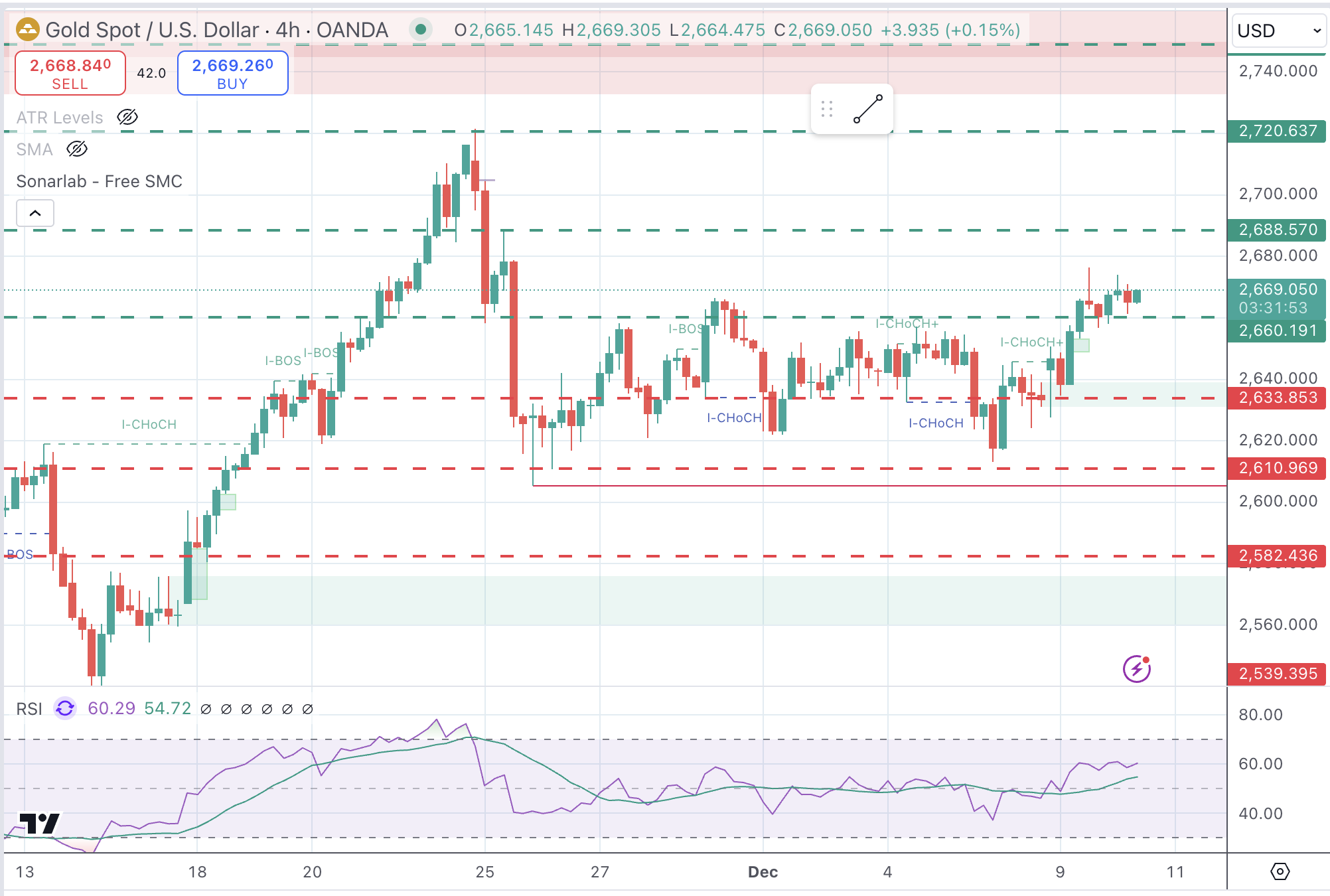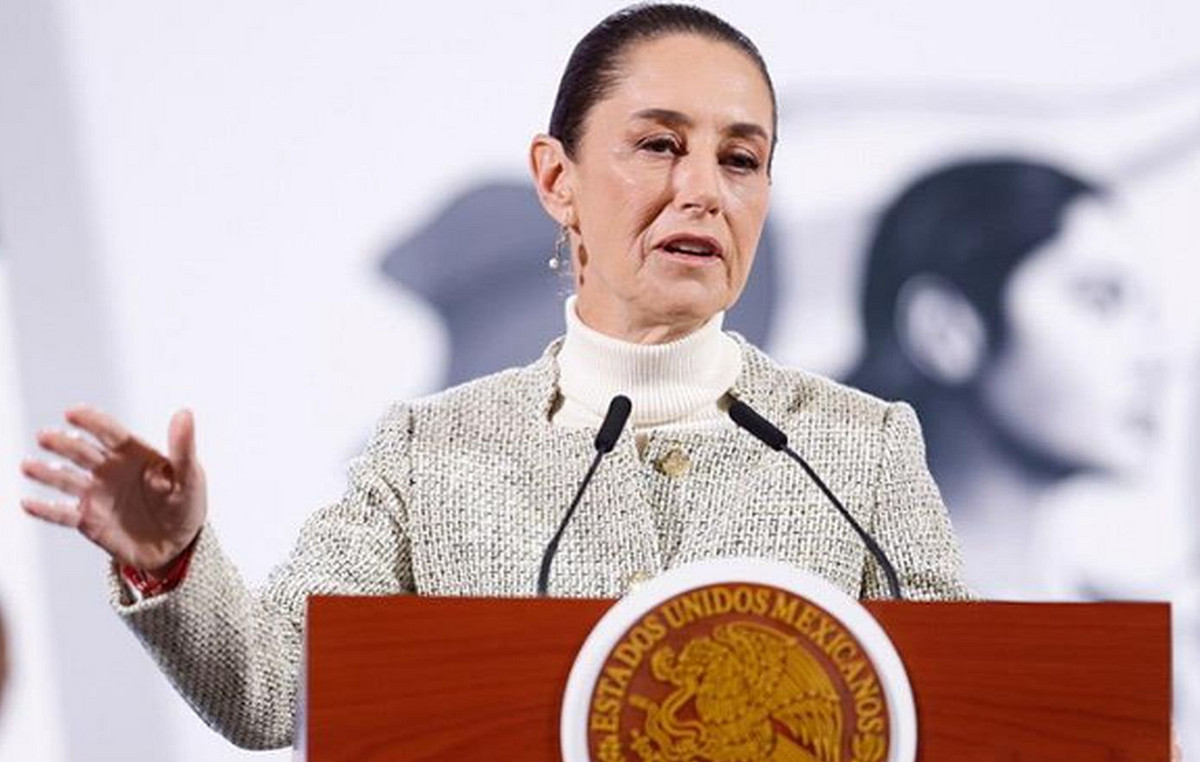- The recovery in the price of Gold maintains its positive momentum intact, strengthened by purchases from China and safe haven flows.
- The moderate recovery of the US Dollar is weighing on Gold.
- The technical outlook for XAU/USD remains positive with price action above the trading range of the past two weeks.
Gold (XAU/USD) maintains a slightly bullish tone on Tuesday. The change in tone by China’s Politburo, promising more economic stimulus to support growth, and the resumption of Gold purchases by the People’s Bank of China (PBoC) are acting as a tailwind for the precious metal.
Other sources of support for Gold are safe haven flows triggered by uncertainty in the Middle East, following the fall of the Bacher El Assad regime in Syria, and political blockades in France and Germany.
Finally, rising expectations that the Federal Reserve (Fed) will cut rates next week keep US yields near multi-week lows and provide additional support to the non-yielding metal.
What moves the market today: A somewhat stronger Dollar is weighing on the recovery of Gold
- China’s PBoC reported buying 160,000 ounces in November after a six-month pause. This has raised expectations of further appreciation in Gold and will likely support speculative demand for bullion.
- In Syria, the various rebel factions are beginning negotiations to form a government as foreign powers such as Israel and Türkiye take positions. Growing uncertainty in an already volatile region will support demand for safe-haven Gold.
- The US dollar is trading moderately higher ahead of Wednesday’s Consumer Price Index (CPI) numbers to clarify the Fed’s monetary easing schedule for 2025.
- CME Group’s Fed Watch tool reveals an 86% probability of a 25 basis point cut by the Fed after the December 17-18 meeting and two to three more cuts in 2025.
- US consumer inflation is expected to confirm that inflation remains persistently above the Fed’s 2% target. The headline CPI is expected to have risen at an annual rate of 2.7%, from 2.6% in October, with the underlying CPI stable at 3.3% year-on-year.
US Dollar PRICE Today
The table below shows the percentage change of the US Dollar (USD) against major currencies today. US dollar was the strongest currency against the New Zealand dollar.
USD EUR GBP JPY CAD AUD NZD CHF USD 0.16% -0.11% 0.23% 0.00% 0.58% 0.62% 0.09% EUR -0.16% -0.26% 0.03% -0.16% 0.42% 0.46% -0.07% GBP 0.11% 0.26% 0.29% 0.10% 0.69% 0.72% 0.18% JPY -0.23% -0.03% -0.29% -0.20% 0.38% 0.41% -0.11% CAD -0.01% 0.16% -0.10% 0.20% 0.57% 0.61% 0.09% AUD -0.58% -0.42% -0.69% -0.38% -0.57% 0.03% -0.49% NZD -0.62% -0.46% -0.72% -0.41% -0.61% -0.03% -0.52% CHF -0.09% 0.07% -0.18% 0.11% -0.09% 0.49% 0.52% The heat map shows percentage changes for major currencies. The base currency is selected from the left column, while the quote currency is selected from the top row. For example, if you choose the US Dollar from the left column and move along the horizontal line to the Japanese Yen, the percentage change shown in the box will represent USD (base)/JPY (quote).
Technical Analysis: XAU/USD remains just above the previous upper range at $2,660
Gold’s rally is losing steam, with the US dollar rising on Tuesday, but holding steady above the upper range of the last two weeks at $2,660.
Above here, the next target would be the intraday level of $2,690, and the November 24 high of $2,720. A bearish reaction below the aforementioned $2,660 would bring the December 9 low at $2,630 back into focus, before the bottom of the channel (November 26 and December 5 lows) at $2,605.
XAU/USD 4-hour chart
Inflation FAQs
Inflation measures the rise in prices of a representative basket of goods and services. General inflation is usually expressed as a month-on-month and year-on-year percentage change. Core inflation excludes more volatile items, such as food and fuel, which can fluctuate due to geopolitical and seasonal factors. Core inflation is the figure economists focus on and is the target level of central banks, which are mandated to keep inflation at a manageable level, typically around 2%.
The Consumer Price Index (CPI) measures the variation in prices of a basket of goods and services over a period of time. It is usually expressed as a percentage of inter-monthly and inter-annual variation. Core CPI is the target of central banks as it excludes food and fuel volatility. When the underlying CPI exceeds 2%, interest rates usually rise, and vice versa when it falls below 2%. Since higher interest rates are positive for a currency, higher inflation usually translates into a stronger currency. The opposite occurs when inflation falls.
Although it may seem counterintuitive, high inflation in a country drives up the value of its currency and vice versa in the case of lower inflation. This is because the central bank will typically raise interest rates to combat higher inflation, attracting more global capital inflows from investors looking for a lucrative place to park their money.
Gold was once the go-to asset for investors during times of high inflation because it preserved its value, and while investors often continue to purchase gold for its safe haven properties during times of extreme market turmoil, this is not the case. most of the time. This is because when inflation is high, central banks raise interest rates to combat it. Higher interest rates are negative for Gold because they increase the opportunity cost of holding Gold versus an interest-bearing asset or placing money in a cash deposit account. On the contrary, lower inflation tends to be positive for Gold, as it reduces interest rates, making the shiny metal a more viable investment alternative.
Source: Fx Street
I am Joshua Winder, a senior-level journalist and editor at World Stock Market. I specialize in covering news related to the stock market and economic trends. With more than 8 years of experience in this field, I have become an expert in financial reporting.








